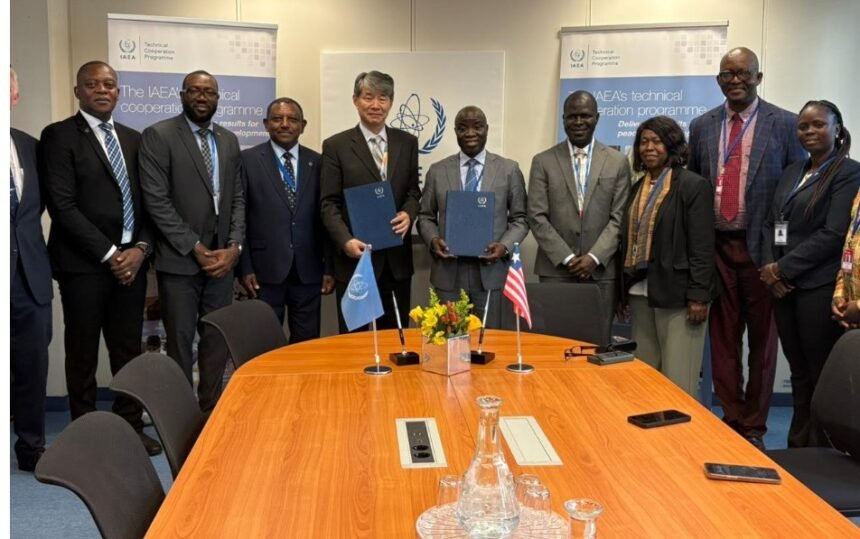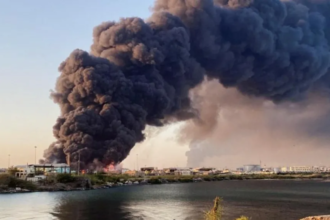By Sara Camara
MONROVIA, Liberia– In a significant stride towards sustainable national development, Liberia has officially inked a new Country Programme Framework (CPF) with the International Atomic Energy Agency (IAEA) for the period 2026 to 2030. This agreement, signed on September 17, 2025, in Vienna, Austria, marks a pivotal moment for the nation, outlining key areas of technical cooperation focused on agriculture, health, radiation safety, and environmental protection.
But with the ink now dry on this ambitious framework, the crucial question arises: What next? The signing ceremony was a milestone, yet it signals the beginning of an intensive journey of implementation, collaboration, and transformation.
A Framework for National Transformation
The CPF isn’t just a standalone agreement; it’s deeply integrated with Liberia’s national development plan, the ARREST Agenda for Inclusive Development (2025-2029). This alignment ensures that IAEA technical cooperation directly supports Liberia’s priorities, including food security, infrastructure, governance, human capital development, and sanitation.
The framework itself was meticulously developed through a collaborative effort involving the Ministry of Foreign Affairs (as the liaison), the Environmental Protection Agency (as the designated national authority), and the Ministries of Agriculture, Health, and Mines and Energy. The involvement of UN partners like UNDP, FAO, and WHO further underscores its comprehensive and integrated approach.
Five Pillars of Progress
The new CPF identifies five priority areas where the peaceful applications of nuclear technology will be leveraged:
- Nuclear and Radiation Safety and Security:Â This foundational pillar focuses on establishing a robust regulatory framework and an independent authority. This is crucial for ensuring the safe and secure use of any nuclear technology within the country.
- Food and Agriculture:Â Imagine boosting crop yields, improving livestock health, ensuring safer food, and managing precious soil and water resources more efficiently. Nuclear technologies will play a key role in achieving these vital goals for food security.
- Health and Nutrition: A major highlight is the plan for establishing a radiotherapy facility – a game-changer for cancer treatment in Liberia. Beyond that, nuclear techniques will be employed to accurately assess and improve maternal and child nutrition, tackling critical public health challenges.
- Energy and Industry:Â Strengthening national capacity in energy planning using IAEA tools and supporting strategy development will help Liberia chart a more sustainable and efficient energy future.
- Water and Environment:Â Building technical capacity for applying isotopic techniques will be instrumental in sustainably managing Liberia’s water resources, a critical component of environmental protection.
Beyond the Signing: The Road Ahead
Liberia’s membership with the IAEA since 1962 highlights a long-standing commitment to the peaceful use of nuclear technology. This new CPF deepens that partnership. However, the success of this ambitious five-year plan hinges on what happens from here.
Here’s what lies ahead:
- Detailed Implementation Plans:Â The broad strokes of the CPF must now be translated into specific, actionable projects with clear timelines, assigned responsibilities, and measurable outcomes.
- Capacity Building:Â Investing in human capital is paramount. This means training Liberian scientists, technicians, medical professionals, and regulators in the specialized skills required for operating and managing nuclear technologies safely and effectively.
- Infrastructure Development:Â Establishing a radiotherapy facility, modern laboratories for agricultural research, and advanced monitoring stations for environmental protection will require significant investment and meticulous planning.
- Sustained Collaboration:Â The strong partnership among the various Liberian ministries, the EPA, and international partners (IAEA, UN agencies) must continue and be strengthened to ensure seamless coordination and resource mobilization.
- Public Awareness and Engagement:Â Educating the public about the benefits and safety of these nuclear applications is vital to foster understanding, trust, and support for the initiatives.
- Monitoring and Evaluation:Â Continuous oversight will be crucial to track progress, identify challenges, and make necessary adjustments to ensure projects stay on track and deliver the desired impact.
- Political Will and Resource Allocation:Â The success of the CPF will ultimately depend on sustained political commitment and the allocation of necessary resources from the Liberian government and its partners.
The signing of the 2026-2030 Country Programme Framework with the IAEA is a testament to Liberia’s vision for a more prosperous and healthier future. It’s an affirmation that scientific and technological advancements, responsibly applied, can be powerful tools for development. The blueprint is now in place; the real work of building that future, brick by brick and skill by skill, begins now.









